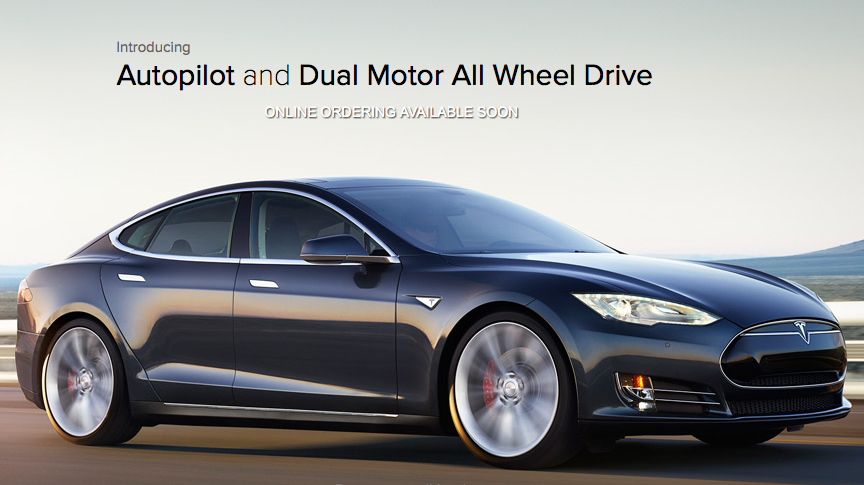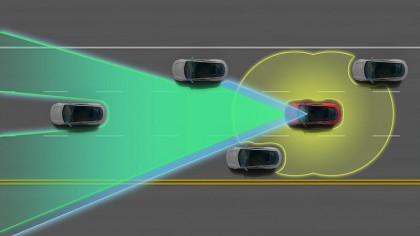The new Tesla Model D will read road signs and adjust its speed accordingly
Tesla P85D on sale now with delivery in December

Elon Musk has just launched the next generation of Tesla's electric car, the all-wheel-drive model D.
The Tesla P85D, which sits at the top of the line, can accelerate from 0-60mph in 3.2 seconds, matching the McLaren F1. It also runs for 275 miles on a single change (10 more than the Tesla S) and packs in some seriously neat self-driving tech.
The D will be able to read road signs and adjust its speed automatically, and will even autonomously switch lanes when the driver indicates. But should the car start to wander from its lane without the indicator being used, it'll steer itself back into place.
Handily, the car's autopilot feature will let it park itself when you get out, and will brake automatically if it's about to hit something - a safety feature that is becoming more common in the industry.

Unveiling the D
As for the name, that D stands for "dual motor". The current Model S is a rear-wheel-drive vehicle, while the D has two motors to power both the front and back wheels.
There will be three different models of the D starting with the P85D that's on sale now. It'll be de-livered in De-cember, as if that wasn't already enough "de-" sounding names for you.

Next year, the 85D and the 60D will rev their dual motor engines in February with main differences being in battery size, horsepower and, of course.
Sign up for breaking news, reviews, opinion, top tech deals, and more.
Both models still get an additional 10 miles of highway driving time next to their rear-motor S counterparts.
We had someone on the ground at the event and we'll be updating this with more information soon.

Hugh Langley is the ex-News Editor of TechRadar. He had written for many magazines and websites including Business Insider, The Telegraph, IGN, Gizmodo, Entrepreneur Magazine, WIRED (UK), TrustedReviews, Business Insider Australia, Business Insider India, Business Insider Singapore, Wareable, The Ambient and more.
Hugh is now a correspondent at Business Insider covering Google and Alphabet, and has the unfortunate distinction of accidentally linking the TechRadar homepage to a rival publication.